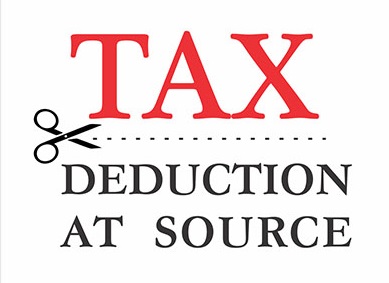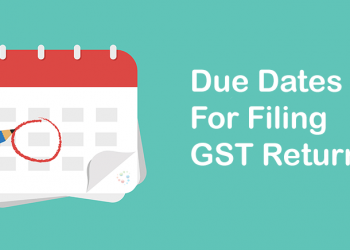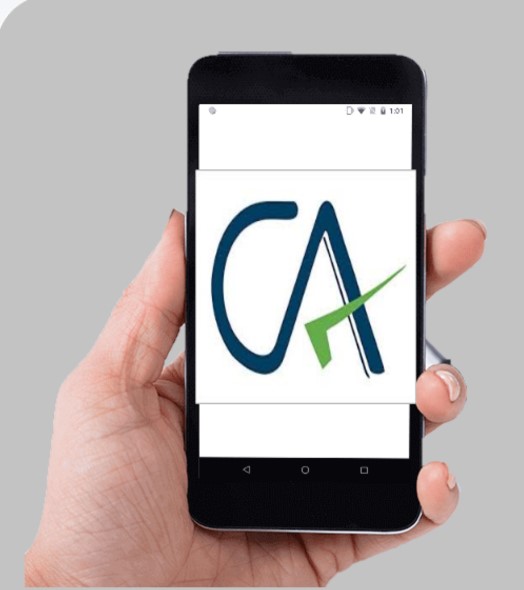Section 194S: Payment on transfer of virtual digital asset:
Any person responsible for paying to any resident any sum by way of consideration for transfer of a virtual digital asset, shall, at the time of credit of such sum to the account of the resident or at the time of payment of such sum by any mode, whichever is earlier, deduct an amount equal to one per cent of such sum as income-tax.
Notwithstanding anything contained in sub-section (1), no tax shall be deducted in a case, where—
(a) the consideration is payable by a specified person and the value or aggregate value of such consideration does not exceed fifty thousand rupees during the financial year; or
(b) the consideration is payable by any person other than a specified person and the value or aggregate value of such consideration does not exceed ten thousand rupees during the financial year.
For the purposes of this section “specified person” means a person,—
(a) being an individual or a Hindu undivided family, whose total sales, gross receipts or turnover from the business carried on by him or profession exercised by him does not exceed one crore rupees in case of business or fifty lakh rupees in case of profession, during the financial year immediately preceding the financial year in which such virtual digital asset is transferred;
(b) being an individual or a Hindu undivided family, not having any income under the head “Profits and gains of business or profession.
“virtual digital asset” means—
(a) any information or code or number or token (not being Indian currency or foreign currency), generated through cryptographic means or otherwise, by whatever name called, providing a digital representation of value exchanged with or without consideration, with the promise or representation of having inherent value, or functions as a store of value or a unit of account including its use in any financial transaction or investment, but not limited to investment scheme; and can be transferred, stored or traded electronically;
(b) a non-fungible token or any other token of similar nature, by whatever name called;
(c) any other digital asset, as the Central Government may, by notification in the Official Gazette specify:
Provided that the Central Government may, by notification in the Official Gazette, exclude any digital asset from the definition of virtual digital asset subject to such conditions as may be specified therein.
Explanation.—For the purposes of this clause,—
(a) “non-fungible token” means such digital asset as the Central Government may, by notification in the Official Gazette, specify;
(b) the expressions “currency”, “foreign currency” and “Indian currency” shall have the same meanings as respectively assigned to them in clauses (h), (m) and (q) of section 2 of the Foreign Exchange Management Act, 1999 (42 of 1999);]
Above are some relevant extract’s from section 194S of the Income Tax Act.
Now Let’s have a look at guidance note issued by CBDT by way of circular No. 13/2022 Dt. 22.06.2022 which is as under:
Question 1. Who is required to deduct tax when the transfer of VDA is taking place on or through an Exchange and payment is made by the purchaser to the Exchange (directly or through broker) and then from the Exchange it goes to seller directly or through the broker?
Answer: According to section 194S of the Act, any person who is responsible for paying to any resident any sum by way of consideration for transfer of VDA is required to deduct tax. Thus, in a peer to peer (i.e. direct buyer to seller) transaction, the buyer (i.e person paying the consideration) is required to deduct tax under section 194S of the Act. However, if the transaction is taking place on or through an Exchange there is a possibility of tax deduction requirement under section 194S of the Act at multiple stages. Hence, in order to remove difficulties for transactions taking place on or through an Exchange, the following clarifications are issued:-
(i) In a case where the transfer of VDA takes place on or through an Exchange and the VDA being transferred is owned by a person other than the Exchange: In this case buyer would be crediting or making payment to the Exchange (directly or through a broker). The Exchange then would be required to credit or make payment to the owner of VDA being transferred, either directly or through a broker. Since there are multiple players, to remove
difficulty it is clarified that:
1. Tax may be deducted under section 194S of the Act only by the Exchange which is crediting or making payment to the seller (owner of the VDA being transferred). In a case where broker owns the VDA, it is the broker who is the seller. Hence, the amount of consideration being credited or paid to the broker by the Exchange is also subject to tax deduction under section 194S of the Act.
2. In a case where the credit/payment between Exchange and the seller is through a broker (and the broker is not seller), the responsibility to deduct tax under section 194S of the Act shall be on both the Exchange and the broker. However, if there is a written agreement between the Exchange and the broker that broker shall be deducting tax on such credit/payment, then broker alone may deduct the tax under section 194S of the Act. The Exchange would be required to furnish a quarterly statement (in Form no 26QF) for all such transactions of the quarter on or before the due date prescribed in the Income-tax Rules, 1962.
(ii) In a case where the transfer of VDA takes place on or through an Exchange and the VDA being transferred is owned by such Exchange: In this case there are no multiple players. The buyer is required to deduct tax under section 194S of the Act. However, there may be a practical issue as the buyer may not know whether the VDA being transferred is owned by the Exchange or not. Hence, there may be genuine doubt in the mind of buyer with regard to its responsibility to deduct tax under section 194S of the Act. This difficulty would also be there if the buyer is buying VDA from an Exchange through a broker.
To remove this difficulty, it is clarified that while the primary responsibility to deduct tax under section 194S of the Act, in this case, remains with the buyer or his broker, as an alternative the Exchange may enter into a written agreement with the buyer or his broker that in regard to all such transactions the Exchange would be paying the tax on or before the due date for that quarter. The Exchange would be required to furnish a quarterly statement (in Form No. 26QF) for all such transactions of the quarter on or before the due date prescribed in the Income-tax Rules, 1962. The Exchange would also be required to furnish its income tax return and all these transactions must be included in such return. If these conditions are complied with, the buyer or his broker would not be held as assessee in default under section 201 of the Act for these transactions.
For the purpose of this circular,-
(i) The term “Exchange” means any person that operates an application or platform for transferring of VDAs, which matches buy and sell trades and executes the same on its application or platform.
(ii) The term “Broker” means any person that operates an application or platform for transferring of VDAs and holds brokerage account/accounts with an Exchange for execution of such trades.
Question 2: Question no 1 was with respect to transactions where the consideration for transfer of VDA is not in kind. How will this operate in a situation where it is in kind or in exchange of another VDA?
Answer: According to proviso to sub-section (1) of section 194S of the Act, there could be situations where the consideration is in kind or in exchange of another VDA or partly in kind and cash is not sufficient to meet the TDS liability. In these situations, the person responsible for paying such consideration is required to ensure that tax required to be deducted has been paid in respect of such consideration, before releasing the consideration.
In the above situation, the buyer will release the consideration in kind after seller provides proof of payment of such tax (e.g. Challan details etc.). In a situation where VDA “A” is being exchanged with another VDA “B”, both the persons are buyer as well as seller. One is buyer for “A” and seller for “B” and another is buyer for “B” and seller for “A”. Thus both need to pay tax with respect to transfer of VDA and show the evidence to other so that VDAs can then be exchanged. This would then be required to be reported in TDS statement along with challan number. This year Form No. 26Q has included provisions for reporting such transactions. For specified persons, Form No. 26QE has been introduced.
However, if the transaction is through an Exchange there is practical issue in implementing this provision. In order to address this practical issue and to remove difficulty, it is clarified that in such a situation, as an alternative, tax may be deducted by the Exchange. Such an alternative mechanism can be exercised by the Exchange based on written contractual agreement with the buyers/sellers.
If such an alternative mechanism is exercised,
(i) the Exchange would be required to deduct tax for both legs of the transactions and pay to the Government. In the Form 26Q it will, for the reasons explained before, need to report it as tax deducted on both legs of the transaction.
(ii) the buyer and seller would not be independently required to follow the procedure prescribed in proviso to sub-section (1) of section 194S of the Act.
When the Exchange opts for deduction of tax under section 194S of the Act on such transactions, there is also a possibility that the tax amount deducted is also in kind and needs to be converted into cash before it can be deposited with the Government. In this regard, the following mechanism shall be adopted by the Exchange
(i) At the time of transaction, the Exchange will deduct TDS in the pair being traded. For example, in case of trade for Monero to Deso, 1% of Monero and 1% Deso will be deducted as tax under section 194S of the Act by the Exchange and balance shall be transferred to the customer. The trail of transactions evidencing deduction of 1% of consideration for every VDA to VDA trade shall be maintained by the Exchange.
(ii) The Exchanges shall immediately execute a market order for converting this tax deducted in kind (1% Monero/ 1% Deso in the above example) to one of the primary VDAs (BT, ETH, USDT, USDC) which can be easily converted into INR. This step will ensure that the tax deducted under section 194S of the Act in the form of non-primary VDAs like Deso/Monero is converted to an equivalent of primary VDAs which have a ready INR market. Time stamps of timing of orders to be maintained to ensure such conversion of VDAs withheld to be done on immediate basis by the Exchange. If the taxes are withheld in primary VDAs, this step would be ignored.
(iii) All the tax deducted under section 194S of the Act in the form of primary VDAs {or converted into primary VDA under step (ii)} will be accumulated for the day. Time limit will be from 00:00 hours to 23:59 hours. VDA accumulation by the Exchange shall be verifiable from the trail of orders for VDA to VDA trades executed during the day.
(iv) The accumulated balance of primary VDAs at 00.00 hours will be converted into INR based on the market rate existing at that time. In order to bring in consistency and to avoid discretion, the Exchanges are required to place market order at 00:00 hours for the tax withheld {or converted under step (ii)} in form of primary VDAs for conversion into INR. These sell market orders shall be executed based on the open buy orders in the market. Price and quantity data for every matched trade shall be maintained by the Exchange and shall be available for verification. It shall be verifiable from the system coding that the conversion into INR happened at the first available buy order based on the prevailing buy order book of the respective Exchange at the time of conversion. As a practice, the respective Exchange liquidating the VDA shall be prohibited to be a buyer for these VDAs.
(v) Customer will be issued a contract note over email which will include the amount of tax withheld in kind under section 194S and the amount of INR realized from such tax withheld.
(vi) The tax withheld in kind under section 194S of the Act and converted into INR by following the above procedure shall be deposited in the Government Account as per the time line and process given in the Income-tax Rules 1962.
It is clarified that there would not be any further TDS for converting the tax withheld in kind in the form of VDA into INR or from one VDA to another VDA and then into INR.
Question 3: Whether the provision of section 194Q of the Act is also applicable on transfer of VDA?
Answer Without going into the merit whether VDA is goods or not, it is clarified that once tax is deducted under section 194S of the Act, tax would not be required to be deducted under section 194Q of the Act.
Question 4: Whether the consideration for transfer of VDA shall be on Gross basis after including GST/commission or it shall be on “net basis” after exclusion of these items.
Answer: In order to remove difficulty, it is clarified that the tax required to be withheld under section 194S of the Act shall be on the “net” consideration after excluding GST/charges levied by the deductor for rendering service.
Question 5: In transactions where payment is being carried out through payment gateways, there may be tax deduction twice. To illustrate that a person ‘XYZ’ is required to make payment to the seller for transfer of VDA. He makes payment of one lakh rupees through digital platform of “ABC”. On these facts liability to deduct tax under section 194S of the Act may fall on both “XYZ” and “ABC. Is tax required to be deducted by both?
Answer: In order to remove this difficulty, it is provided that in the above example, the payment gateway will not be required to deduct tax under section 194S of the Act on a transaction, if the tax has been deducted by the person (‘XYZ’) required to make deduction under section 194S of the Act. Hence, in the above example, if “XYZ” has deducted tax under section 194S of the Act on one lakh rupees, “ABC” will not be required to deduct tax under section 194S of the Act on the same transaction. To facilitate proper implementation, “ABC” may take an undertaking from “XYZ” regarding deduction of tax.
Question 6: Section 194S shall come into effect from the 1st July 2022. The liability to deduct tax under section 194S of the Act applies only when the value or aggregate value of the consideration for transfer of VDA exceeds fifty thousand rupees during the financial year in case of consideration being paid by specified person and ten thousand rupees in other cases. It is not clear how this limit of fifty thousand (or ten thousand) is to be computed?
Answer: It is clarified that,-
(i) Since the threshold of fifty thousand rupees (or ten thousand rupees) is with respect to the financial year, calculation of consideration for transfer of VDA triggering deduction under section 194S of the Act shall be counted from 1st April, 2022. Hence, if the value or aggregate value of the consideration for transfer of VDA payable by a person exceeds fifty thousand rupees (or ten thousand rupees) during the financial year 2022-23 (including the period up to 30th June 2022), the provision of section 194S of the Act shall apply on any sum, representing consideration for transfer of VDA, credited or paid on or after 1st July 2022.
(ii) Since the provision of section 194S of the Act applies at the time of credit or payment (whichever is earlier) of any sum, representing consideration for transfer of VDA, such sum which has been credited or paid before 1st July 2022 would not be subjected to tax deduction under section 194S of the Act.
To read full circular CLICK HERE: Guidelines under section 194S 13.06.2022 2.15 pm.docx (incometaxindia.gov.in)
You can book phone consultation/ assistance online with expert as mentioned below:
To book ITR filing with experts CLICK ME.
To book phone consultation with experts for any Income tax related matters CLICK ME.
To book consultation for Faceless Assessment with experts CLICK ME.
To book phone consultation with experts for GST related matters CLICK ME.
To book general phone consultation with expert CLICK ME.














Comments 1